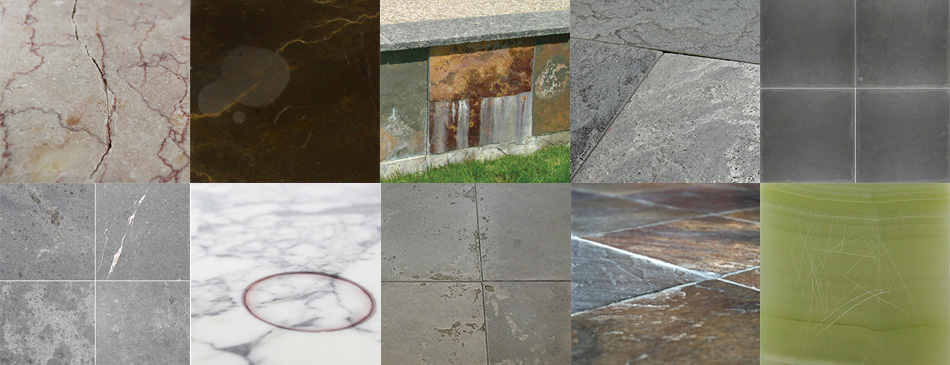Most Common Surface Problems
All materials – natural materials in particular – are perfectly imperfect.
Materials will have a wide range of characteristics (i.e. factory-repaired holes, cracks and fissures). There will be variation from piece to piece. Materials will stain, scratch, etch, patina and/or effloresce. And there’s no such thing as a “perfect” installation. All of this is perfectly normal and is part of the inherent beauty of the materials; these are not material defects. When customers haven’t been properly educated about what to expect, they perceive many characteristics as defects. This guide is designed to help you understand and appreciate these inherent characteristics. Some of these inherent characteristics and the issues that may result include:

ACID ETCHING Surface erosion of natural stone.WHAT CAUSES ACID ETCHING? Marble, travertine, limestone and onyx will react to acidic foods (i.e. lemons or tomatoes) and acidic liquids (i.e. some cleaners or acid rain). This reaction will result in a dulling in surface sheen and change in texture, otherwise referred to as “acid etching”.
[divider]
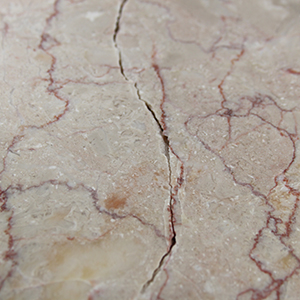
CRACKING Tiles are cracking following installation.WHAT CAUSES CRACKING? Cracks in flooring applications are typically due to material being installed on an uneven sub-floor, the sub-floor shifting after installation, or due to the material not being able to withstand the traffic conditions in the space. Often, cracks can be repaired without having to replace the tile.
[divider]
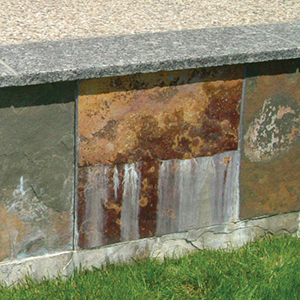
EFFLORESCENCE A white or dark film appears on the surface of a material, generally found in exterior applications or wet areas.WHAT CAUSES EFFLORESCENCE?Efflorescence in natural stone is caused by water carrying mineral salts from below the surface of the stone rising to the exposed face. In porcelain tile efflorescence appears on the surface of grout joints or unglazed tiles and is caused by moisture reacting with impurities in the mortar.
[divider]
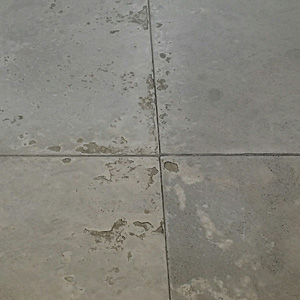
SPALLING Salt spalling is a specific type of weathering which occurs in porous building materials, such as brick, natural stone, tiles and concrete. Dissolved salt is carried through the material in water and crystallizes inside the material near the surface as the water evaporates. As the salt crystals expand this builds up shear stresses which break away spall from the surface.
[divider]
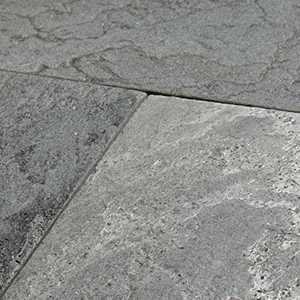
LIPPAGE The floor appears to be uneven after installation.WHAT CAUSES LIPPAGE? Some tile installations will show lippage, or a difference in height from one installed tile to the next. This is often caused by uneven sub-floors or improper installation. It’s important to note that all hard surfaces have allowable tolerances (i.e. a certain amount of lippage is to be expected in every installation). Lighting schemes can either accentuate or diminish the appearance of lippage. Lighting at oblique angles will make lippage more visible.
[divider]
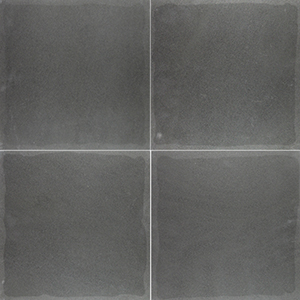
PICTURE-FRAMING There appears to be a halo around the edge of the stone.WHAT CAUSES PICTURE-FRAMING IN NATURAL STONE? Materials with Moderately or Highly Absorbent ratings are prone to the pigment of the grout leaching in from the edge of the stone. This creates a halo, otherwise referred to as “picture-framing”.
[divider]
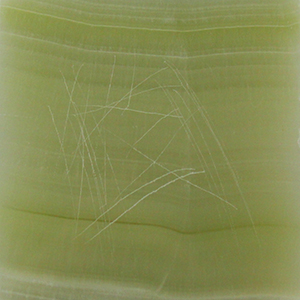
SCRATCHING Scratch marks and abrasions appear on the surface of the material.WHAT CAUSES SCRATCHING? Light scratching occurs over time with exposure to sand and other abrasives. The finish will patina or dull over time as a result of this scratching.
[divider]

STAINING There are wine, oil or grout stains on the surface of the stone.WHAT CAUSES STAINING? Staining often occurs when the stone has high absorption rate and/or it has not been properly sealed. Staining is the residual effect of a spill that cannot be removed with conventional cleaning methods. Read more…
[divider]

VARIATION The final installation doesn’t look like the sample.WHAT CAUSES VARIATION IN NATURAL STONE? As with any natural material, no two pieces of natural stone will be exactly alike. Color, as well as percentage, size and shape of markings, will always vary. Variation is not a material flaw.

